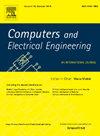Hierarchical manifold sample envelope transformation model for ensemble classification
IF 4.9
3区 计算机科学
Q1 COMPUTER SCIENCE, HARDWARE & ARCHITECTURE
引用次数: 0
Abstract
Ensemble classification is an important branch and research focus in machine learning and pattern recognition. The current main paradigm of ensemble classification algorithms is based on same original samples, resulting in limited diversity between subsets. Therefore, it is particularly important to mine diverse and effective information from the original samples to build a multi-layer samples. However, samples are input into classifier for training one by one, or batch by batch in the existing ensemble algorithms. This ignores the potential value of correlation information among samples during base classifier training. To solve these problems, a new sample transformation model for ensemble classification - Hierarchical Manifold Sample Envelope Transformation Model (HMSET) is proposed. The model consists of three main parts. The first part is manifold sample enveloping model. It extracts local correlation among samples, thereby constructing manifold envelope samples. The second part is hierarchical sample envelope transformation model, which uses a variety of transformation operators and interlayer consistency to mine and constrain the correlation information among samples to enhance the diversity. The third part is two-dimensional fusion mechanism which fuse the final prediction results of the base classifiers. The 19 UCI datasets and several representative algorithms are used for validation. The results show that compared with the original samples, the proposed model improves the diversity of the sample subsets significantly. Compared with related ensemble classification algorithms, the proposed model has significantly better performance of ensemble classification.
Data and code are available in: https://github.com/acceptthisjj/HMSET
集成分类的层次流形样本包络变换模型
集成分类是机器学习和模式识别领域的一个重要分支和研究热点。目前集成分类算法的主要范式是基于相同的原始样本,这导致子集之间的多样性有限。因此,从原始样本中挖掘多样化、有效的信息来构建多层样本就显得尤为重要。然而,现有的集成算法是将样本逐个输入分类器进行训练,或者分批地进行训练。这忽略了基分类器训练过程中样本间相关信息的潜在价值。为了解决这些问题,提出了一种新的集成分类样本变换模型——层次流形样本包络变换模型(HMSET)。该模型主要由三个部分组成。第一部分是流形样本包络模型。它提取样本间的局部相关性,从而构造多元包络样本。第二部分是分层样本包络变换模型,该模型利用多种变换算子和层间一致性对样本间的相关信息进行挖掘和约束,增强样本间的多样性。第三部分是二维融合机制,将基分类器的最终预测结果进行融合。使用19个UCI数据集和几种代表性算法进行验证。结果表明,与原始样本相比,该模型显著提高了样本子集的多样性。与相关的集成分类算法相比,该模型具有明显更好的集成分类性能。数据和代码可在:https://github.com/acceptthisjj/HMSET
本文章由计算机程序翻译,如有差异,请以英文原文为准。
求助全文
约1分钟内获得全文
求助全文
来源期刊

Computers & Electrical Engineering
工程技术-工程:电子与电气
CiteScore
9.20
自引率
7.00%
发文量
661
审稿时长
47 days
期刊介绍:
The impact of computers has nowhere been more revolutionary than in electrical engineering. The design, analysis, and operation of electrical and electronic systems are now dominated by computers, a transformation that has been motivated by the natural ease of interface between computers and electrical systems, and the promise of spectacular improvements in speed and efficiency.
Published since 1973, Computers & Electrical Engineering provides rapid publication of topical research into the integration of computer technology and computational techniques with electrical and electronic systems. The journal publishes papers featuring novel implementations of computers and computational techniques in areas like signal and image processing, high-performance computing, parallel processing, and communications. Special attention will be paid to papers describing innovative architectures, algorithms, and software tools.
 求助内容:
求助内容: 应助结果提醒方式:
应助结果提醒方式:


